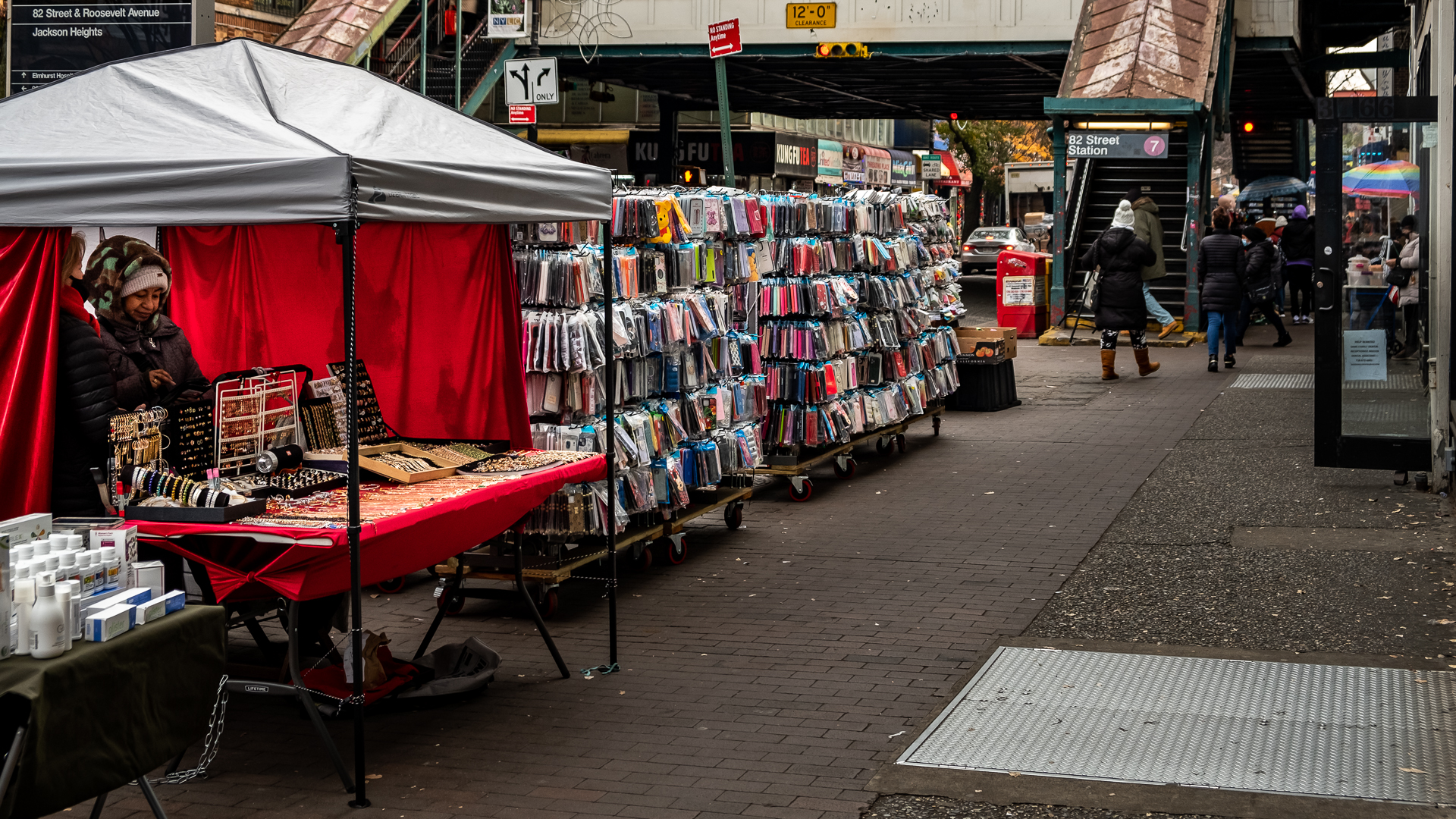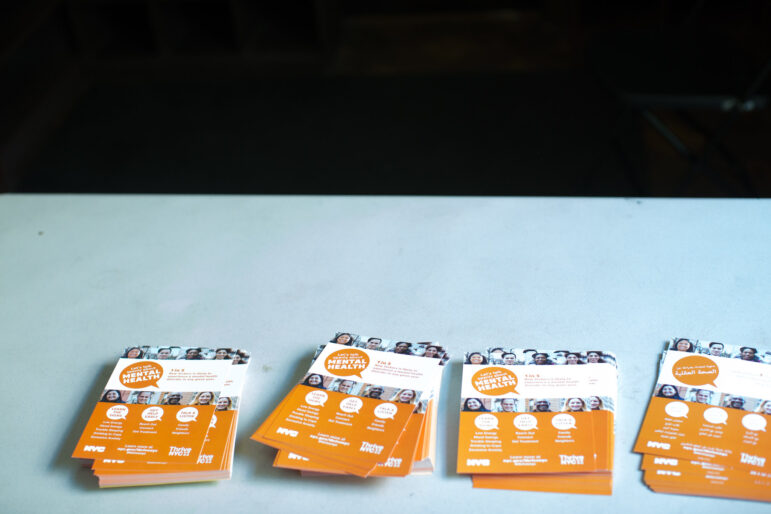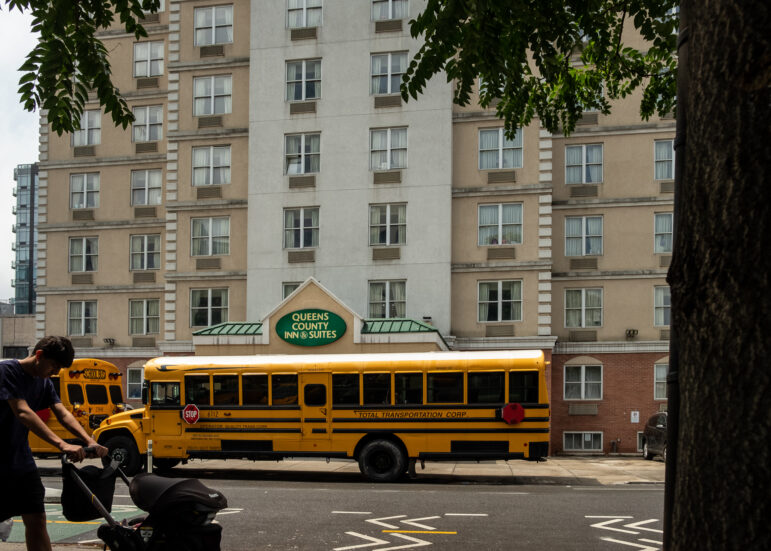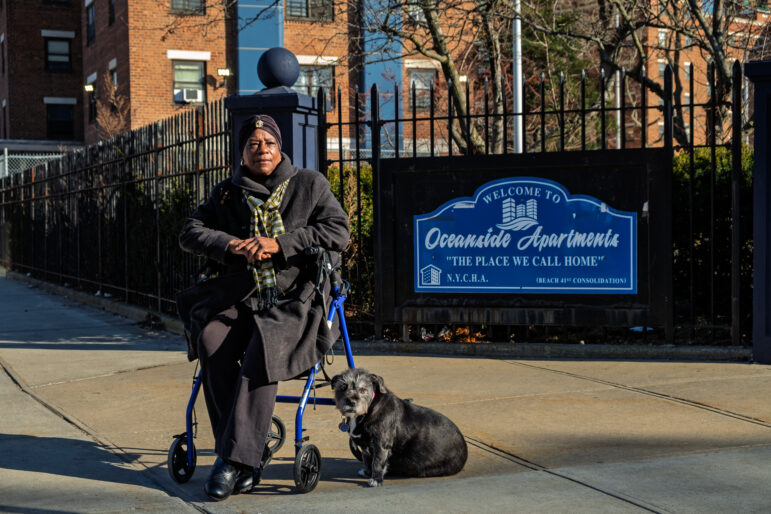“Vending is a commercial enterprise that creates private income. Sidewalks are for all of us, and until now the city has sought to ensure that all those items that encroach on pedestrian space constitute a public service, such as parking meters, trees, and fire hydrants.”

Adi Talwar
Street vendors near the 82nd Street subway station in Jackson Heights, Queens, in 2022.When it comes to our sidewalks, what they are for, and who should use them, we are living in two different worlds.
For years, we’ve seen improvements to the pedestrian experience in New York City. Mayor Eric Adams appointed a public realm czar. When some avenues are so crowded that New Yorkers have had to walk in the street, or in bike lanes, the city started adding “bump-outs”—extensions of the sidewalk near corners—to accommodate the crowds. They also created some mid-block crosswalks. These changes have all worked.
In Manhattan’s Chinatown, the city is committing $40 million to redesign Chatham-Kimlau Square to create a four-way intersection with larger public space and shorter pedestrian crossings. In Brooklyn’s Dumbo, there is a $100 million street reconstruction project which includes widening the sidewalks on the way into Brooklyn Bridge Park. In Downtown Brooklyn, Mayor Adams has committed $40 million for pedestrian improvements to improve the shopping experience along Fulton Street and Flatbush Avenue.
These are examples of a city that values pedestrians—as it should—since they are critical to the vitality and vibrancy of our communities.
This is also a time when uses for the curb are increasing: with containerized waste, online retail deliveries, and outdoor seating. Plus, the much-needed increased investments by the city and Business Improvement Districts (BIDs) in the public realm, adding bike racks, information kiosks, and so forth.
However, a bill is winding its way towards a vote in the City Council that would hamper pedestrian flow and even public safety.
The bill would allow vendors, whether they be selling goods or food, to set up two feet off the curb, as opposed to directly against it, as now required. Moreover, if there is an “obstruction” already—such as a tree bed, bike rack, or fire hydrant—vendors will be able to set up in front of it; this is equivalent to double-parking. Imagine wheelchair users, the blind, elderly, parents with strollers, trying to navigate our sidewalks.
As leaders of Business Improvement Districts, not only in busy business corridors but in quieter corners of New York City, we desire vibrant, well-organized and beautiful streetscapes that reflect a diversity of interests. We need thoughtful standards on what’s on the sidewalk that do not favor one group of New Yorkers over another and ensure pedestrians are able to move freely.
This bill—which may come up for a vote in the next few months—threatens to impede our progress. Vending regulations require a 12-foot-wide path measured from a property line to the curb or sidewalk obstruction. However, that does not include the vending cart and operation itself. Therefore, on a 12-foot-wide sidewalk this bill would allow vendors to take up seven of the 12 feet, forcing pedestrians into five feet of space.
As noted by the Fordham Road BID in the Bronx, on a recent afternoon, so many vendors lined up along the sidewalk that the walkable space was reduced to three feet at some points, leaving pedestrians to jostle each other and wait in line to get through the various bottlenecks. And by the way, New York City law prohibits general merchandise vending in the Fordham Road neighborhood.
Yes, street vendors are a long-time part of the city’s ecosystem. But this bill puts private interests over public interests. Vending is a commercial enterprise that creates private income. Sidewalks are for all of us, and until now the city has sought to ensure that all those items that encroach on pedestrian space constitute a public service, such as parking meters, trees, and fire hydrants. As we said, new arrivals like bike racks chip away at space, but we cannot deny that they serve a public need.
Everything in life is a give-and-take. Giving vendors the right to set up in the middle of the sidewalk will hamper pedestrian movement and will put people at risk. We call on the City Council to reconsider this legislation which could have significant ramifications on community investments made in our public spaces.
Robert J. Benfatto and Erin Piscopink are co-chairs of the NYC BID Association, which represents the leadership of the city’s 76 business improvement districts.








